Embarking on arm day, let’s dive into a meticulously themed week designed to maximize gains right from the start. The intensity kicks off with rope extensions, setting the tone for an arduous yet rewarding session.
Rope Extensions: Pushing Beyond Failure
Let’s start on an arm day with a powerful focus on the triceps, the Rope Extensions Hundred-Rep Challenge, which sets the tone for an intense and relentless workout. The primary objective is to subject the triceps to a grueling and exhaustive challenge, pushing the boundaries of endurance and mental fortitude.
Objective
- The overarching goal of the Rope Extensions Hundred-Rep Challenge is to not only engage the triceps but to do so through a prolonged and demanding routine.
- The challenge is to push beyond the conventional limits of tricep training, promoting endurance, hypertrophy, and a deep mind-muscle connection.
Challenge:
- To kick off this challenge, the first step is to select a weight that allows for approximately 10 reps. This weight should be challenging enough to induce failure at the end of each set. The twist comes with what happens next.
- Instead of the customary rest period post-failure, the challenge transforms into a relentless rest-pause routine. The ultimate objective is to accumulate a total of 100 reps, and this is achieved by pushing through subsequent sets with minimal rest.
Technique:
- Maintaining impeccable form is crucial to the success of this challenge. Throughout the sets, focus on keeping the elbows tucked into the stomach.
- This strategic positioning ensures that the triceps bear the brunt of the load, preventing unnecessary engagement of the traps. The aim is to isolate and exhaust the triceps, maximizing the impact of each repetition.
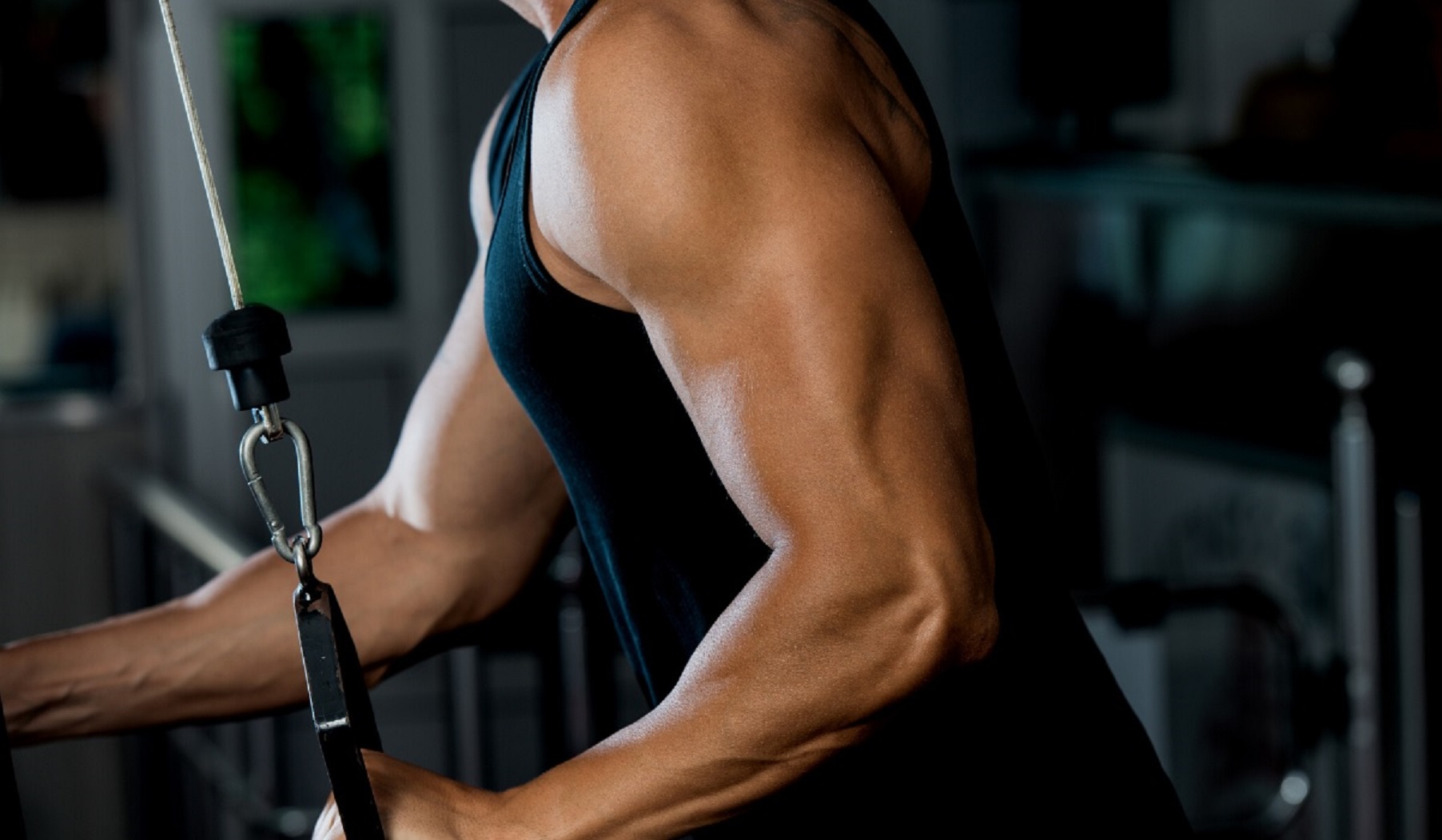
Breathe Control and Endurance:
- As the challenge progresses, breath control becomes a vital component. In the moments of brief rest between the rest-pause sets, emphasize controlled and deep breathing.
- This not only aids in oxygenating the muscles but also contributes to mental focus and endurance. The ability to manage breath amidst the intensity of the challenge separates the ordinary from the extraordinary.
Mind-Muscle Connection:
- The entire challenge hinges on establishing and reinforcing a profound mind-muscle connection. Concentrate on the triceps doing the work, feeling the contraction with each rep, and visualizing the target muscles at play.
Incline Skull Crushers and Seated French Press: Wrist Dynamics Matter
- The Incline Skull Crushers and Seated French Press aren’t just about moving weights; they’re about mastering the intricate dynamics of wrist movement.
- This emphasis adds an extra dimension to the exercises, promoting targeted muscle engagement and a more profound mind-muscle connection.
Incline Skull Crushers
Wrist Stretch and Flexion
- As you embark on the incline skull crushers, pay meticulous attention to the movement of your wrists. Emphasize the stretch as you lower the dumbbells towards your shoulders, and on the ascent, flex your wrists.
- This deliberate wrist action not only enhances the effectiveness of the exercise but also amplifies the engagement of the triceps.
Maintain Tension
- Throughout the set, keep the tension in your triceps constant. By focusing on wrist dynamics, you’re ensuring that the targeted muscles are consistently under stress, promoting optimal muscle growth and definition.
Seamless Transition after Failure
- When failure inevitably sets in, don’t break the flow. Seamlessly transition from the incline skull crushers to the seated French press without the need to change weights.
- This fluid continuity not only saves time but also ensures that the transition is smooth, maintaining the intensity of the workout.
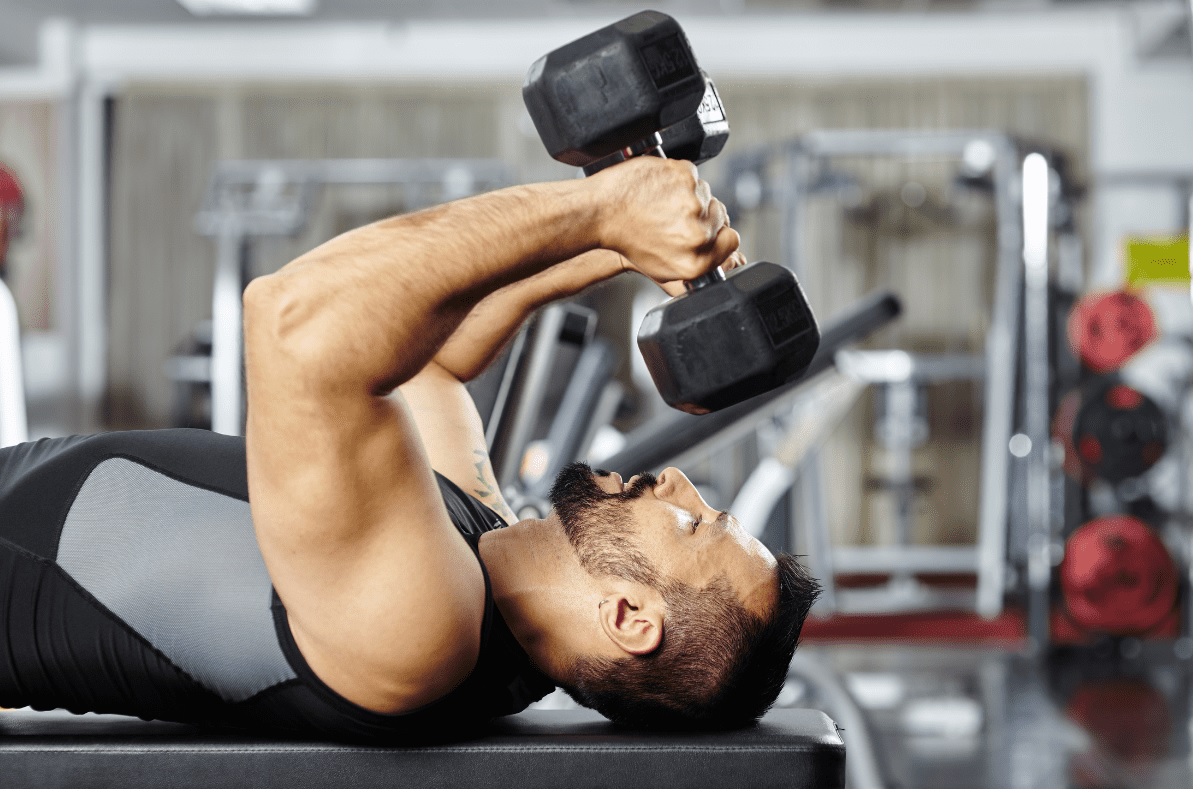
Seated French Press:
Focus on Initial Contraction
- As you move into the seated French press, place a heightened emphasis on the initial part of the contraction.
- By concentrating on the beginning of the movement, you’re maximizing the recruitment of the triceps, optimizing the effectiveness of each repetition.
Weight Consistency
- If the incline skull crushers were executed correctly, there’s no need to fumble with weights during the transition.
- The weight chosen should be suitable for both exercises, providing a seamless experience as you shift from one to the other.
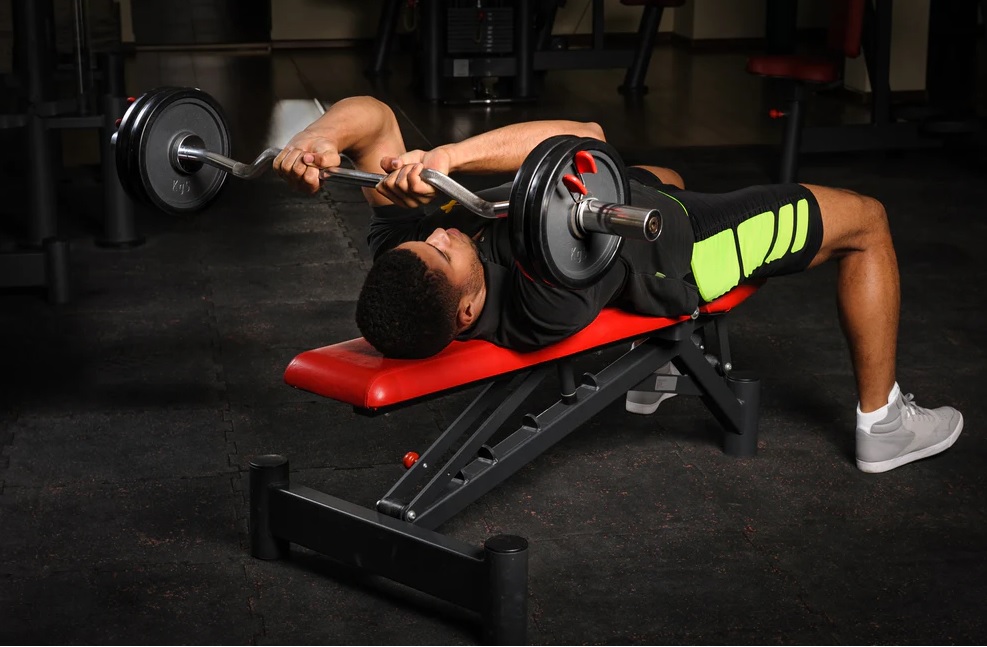
Lateral Head Assault: Compound Set with Cable French Press
As the arm day journey progresses, the focus shifts back to cables, directing our attention to a targeted assault on the lateral head of the triceps. The weapon of choice? A potent compound set featuring the Cable French Press. Leverage the advantage of the cable machine for a seamless transition from one exercise to another, ensuring a relentless attack on the lateral triceps.
Cable French Press:
- Start by positioning yourself slightly forward, maintaining a slight lean. This strategic inclination optimizes the engagement of the lateral head of the triceps during the French press.
- As you execute the cable French press, emphasize pronating your hand during the ascent. This rotational movement activates the lateral head more effectively, contributing to a well-rounded tricep development.
- Execute a full range of motion, ensuring that you stretch the triceps on the way down and contract them fully on the way up. This comprehensive movement pattern promotes optimal muscle activation and growth.
Overhead Extension:
- After completing the Cable French Press, smoothly transition into the overhead extension. Maintain the cable attachment and position yourself to perform the extension without the need for readjustments.

- Continue to emphasize hand pronation during the overhead extension. This ensures sustained engagement of the lateral head and helps avoid compensatory movements that may compromise the effectiveness of the exercise.
- Prioritize a complete stretch during the downward phase of the overhead extension. This maximizes the stretch on the lateral head, contributing to muscle elongation and overall development.
- To prevent errors and ensure flawless execution of the compound set, find your physiological trigger. Whether it’s the rotation of the shoulder or a specific cue to maintain form, this trigger acts as a safeguard against suboptimal movements.
Close Grip Bench: Controlled Failure
- Weight Selection: Choose a weight that challenges your triceps and allows for approximately 8 reps. This weight should be demanding enough to induce muscle fatigue and failure within the desired rep range.
- Tempo Mastery: The essence of this close grip bench lies in the mastery of tempo. Execute each repetition with a slow and controlled pace, emphasizing both the negative and positive phases of the movement. Enforce a deliberate five-count for both the descent and ascent, ensuring precision and intentional engagement of the triceps.
- Safe Failure Positioning: The ultimate goal is to push your triceps to the point of failure, but safety remains a priority. Position yourself on the bench with a setup that allows for a safe failure.
- Chuck the Weight Off: As you approach failure during the final rep, embrace the controlled chaos of reaching muscle exhaustion. When failure is imminent, channel the intensity into a final push, and then, in a controlled manner, chuck the weight off. This act not only signifies the end of the set but also ensures safety by allowing you to quickly unload the resistance.
Biceps: Straight Bar Cable Curls
- Head to the cable machine and equip it with a straight bar. This choice of equipment provides a consistent and controlled resistance, optimizing the engagement of the biceps throughout the movement.
- Aim for a challenging but manageable set of 12 repetitions. The goal is to induce muscle fatigue while maintaining proper form and control.
- Execute each repetition with intention and focus. When failure becomes inevitable, don’t shy away – embrace it. Push the biceps to their limits.

- As failure sets in, resist the temptation to release the bar immediately. Instead, hold the bar in the fully contracted position after the last successful repetition.
- Take a moment to catch your breath. Holding the bar, allow yourself five deep breaths. This brief interlude not only aids in recovering your breath but also mentally prepares you for the next phase.
- After the short breathing pause, summon your strength and push through. Execute additional reps, capitalizing on the post-failure fatigue. This push-through after the brief rest intensifies the workout.
Opposite Side Preacher Curl and Drag Curls:
Set up the preacher curl bench, but this time, approach it from the opposite side. This unconventional positioning sets the stage for a novel and effective bicep workout.
Close Grip Preacher Curls to Failure:
- Grab the bar with a close grip and perform preacher curls until failure. Ensure a controlled descent and an explosive contraction on the way up.
- Focus on the mind-muscle connection, feeling the biceps engage with each repetition.
- When you reach the point of failure, resist the temptation to stop abruptly. Instead, transition swiftly to the next phase of the exercise.
Wider Grip Drag Curls:
- Without delay, widen your grip on the bar to transition seamlessly into drag curls. The wider grip emphasizes a different part of the bicep and ensures a varied stimulus.
- Execute the drag curls with an emphasis on keeping the bar close to your body.
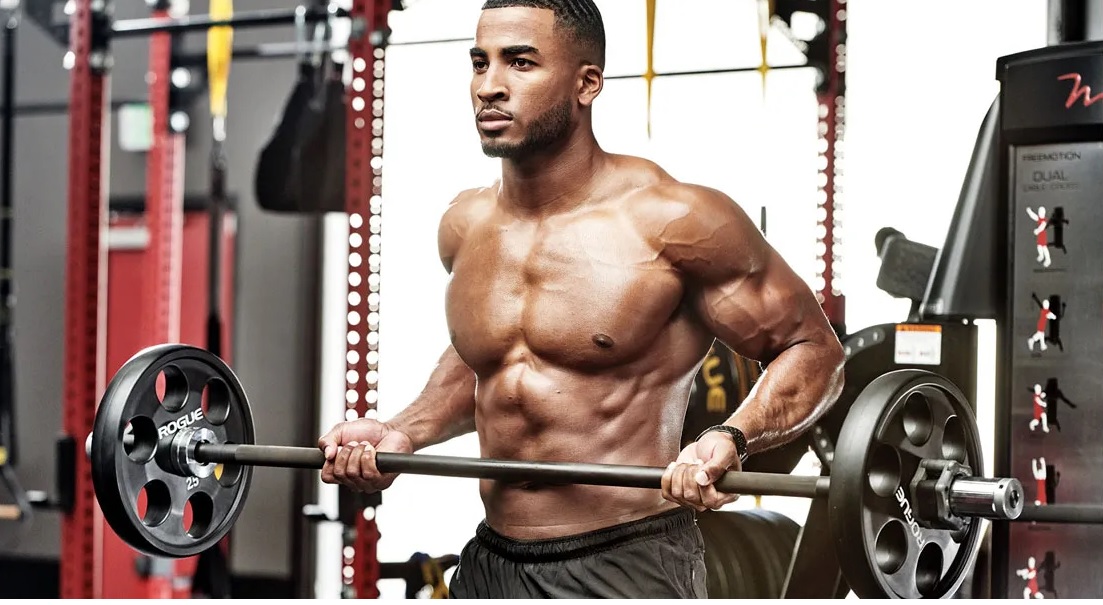
- Carry the intensity from the close grip preacher curls into the drag curls. This fluid transition keeps the biceps under constant tension, maximizing the effectiveness of both exercises.
Reverse Grip and Regular Curls:
In the grand finale of your bicep onslaught, the easy bar takes center stage, hosting a challenge that oscillates between reverse grip curls and regular curls. This dynamic duo not only targets different aspects of the biceps but also introduces a wrist-flexion element for an unyielding and comprehensive challenge.
Reverse Grip Curls:
- Grab the easy bar with a reverse grip, positioning your palms facing downward.
- Initiate the reverse grip curls, emphasizing wrist flexion on the way up. Keep the movement controlled, lifting the bar toward your shoulders while maintaining proper form.

Regular Curls:
- Swiftly transition to a regular grip, palms facing upward.
- As you embark on regular curls, continue to flex the wrists on the way up. This intentional movement not only engages the biceps more effectively but also adds a layer of complexity to the exercise.
- Keep the bar close to your body throughout the regular curls, ensuring that the biceps remain under constant tension. This proximity maximizes the effectiveness of the exercise.
Incline Curls: Five-Count Negative for a Final Blow
As your arm day odyssey nears its conclusion, the spotlight turns to incline curls, a closing act that promises an intense and satisfying finale.
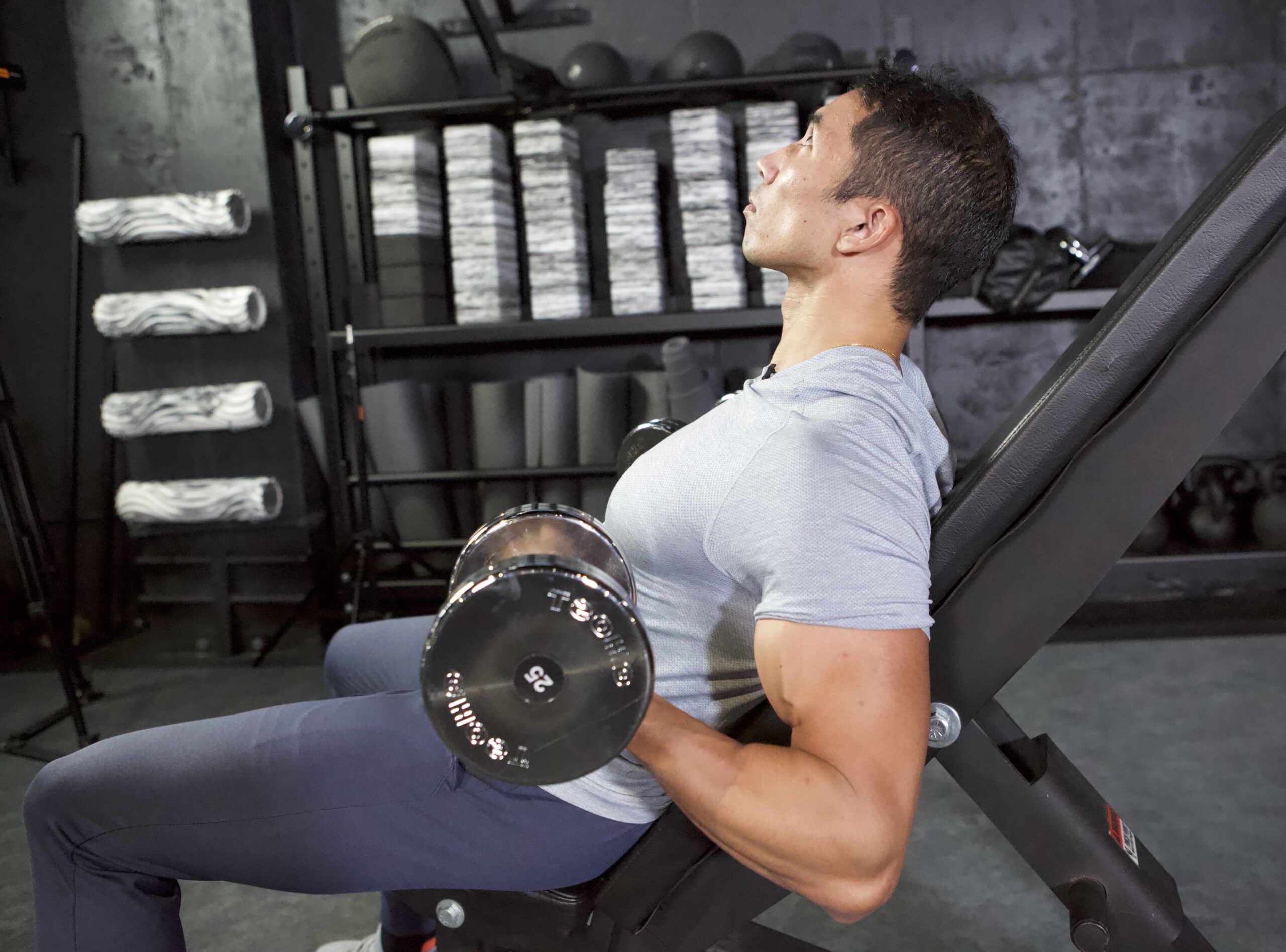
Five-Count Negative:
- As you begin the incline curls, initiate the movement with a controlled and deliberate five-count negative. Lower the weight gradually, maximizing the time under tension.
Positive Repetition:
- After completing the five-count negative, execute the positive phase of the repetition with controlled force. Curl the weight upward, focusing on a strong contraction of the biceps.
This arm day isn’t just a workout; it’s an immersive experience. The diverse exercises, strategic transitions, and attention to detail make it a comprehensive and rewarding journey for both triceps and biceps. Stay committed and push through.









